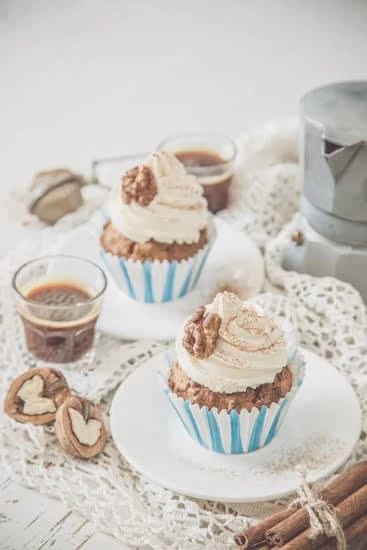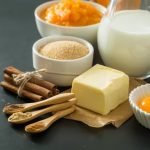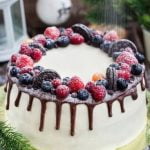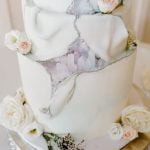Decorating a birthday cake without icing may sound unconventional, but it is actually a great option for various reasons. Working with icing can be messy and time-consuming, not to mention that it may not suit everyone’s taste preferences.
However, decorating a cake without icing allows for creativity to shine through and offers several benefits. Not only does it reduce the amount of sugar on the cake, but it also provides an allergy-friendly alternative for those with dietary restrictions.
When exploring alternatives to icing, there are several options that can give your cake an elegant and decadent finish. Fruit toppings such as berries, sliced kiwi, and sliced mango can create a visually appealing look while adding natural sweetness. By following step-by-step instructions and keeping the fruit fresh, you can create beautiful arrangements that make your cake stand out.
Another option is using whipped cream as a frosting substitute. Whipped cream is versatile and can be easily piped into different shapes or used to create rosettes. Achieving the perfect consistency for whipped cream requires proper whipping techniques. With creative ideas in mind, whipped cream can add a delightful and fluffy texture to your cake decorations.
If you prefer adding color and texture without using icing, exciting sprinkles and edible confetti are perfect choices. There is an array of options available in the market that allows you to press, layer, or outline them onto your cakes easily. For those feeling adventurous, making homemade sprinkles adds a personalized touch to your creations.
Easy and Elegant Fruit Toppings for a Decadent Finish
One of the easiest and most elegant ways to decorate a birthday cake without icing is by using fresh fruits as toppings. Not only do fruits add a burst of color to your cake, but they also provide a refreshing and natural sweetness. Here are some types of fruits that would look beautiful on a cake:
- Berries: Strawberries, blueberries, raspberries, blackberries – these tiny and vibrant fruits are perfect for adding pops of color to your cake. You can arrange them in a pattern or scatter them randomly for a more organic look.
- Sliced Kiwi: Kiwi slices create an attractive green accent on any cake. They have a unique tangy flavor that pairs well with other sweet fruits.
- Sliced Mango: Mango slices add a tropical touch and a bright orange hue to your cake. They bring both visual appeal and a juicy sweetness.
To arrange the fruit toppings in a visually appealing way, start by placing larger fruit pieces first as focal points. Then fill in the gaps with smaller fruits or berries. You can also create patterns or decorative designs using the different fruits.
To prevent the fruit from drying out or losing its freshness, it is important to keep the cake refrigerated until serving time. Right before serving, you can brush the fruit with simple syrup to add shine and maintain its juiciness. Remember to wash the fruits thoroughly before using them and dry them properly to prevent excess moisture on your cake.
Decorating your birthday cake with fresh fruits not only adds beauty but also provides health benefits compared to traditional icing decorations. Fruits are naturally sweet and packed with vitamins and antioxidants, making them a healthier option for those watching their sugar intake or looking for allergy-friendly alternatives. So why not try this easy and elegant fruit topping idea for your next icing-free birthday cake?
How to Use Whipped Cream to Create a Delightful and Fluffy Texture
Whipped cream is a versatile and delicious alternative to icing when it comes to decorating a birthday cake. Not only does it provide a light and fluffy texture, but it also adds a touch of indulgence to your creation. Here are some tips on how to use whipped cream effectively for cake decoration:
- Whip the Cream Properly: To achieve the desired consistency for your whipped cream, start with chilled heavy cream and beat it until stiff peaks form. It’s important to stop beating as soon as the peaks hold their shape, as over-whipping can lead to butter instead of whipped cream.
- Piping Shapes and Rosettes: One of the most common ways to decorate with whipped cream is through piping shapes or rosettes onto the cake. Using a piping bag fitted with a star-shaped tip, you can create beautiful borders, swirls, or even personalized messages on top of your cake.
- Stabilize the Whipped Cream: If you’re worried about your whipped cream losing its structure over time, you can stabilize it by adding a stabilizer like gelatin or powdered sugar. This will help the whipped cream maintain its shape for longer periods, especially if you need to transport the cake.
- Additional Flavors and Colors: Whipped cream provides an excellent canvas for experimenting with different flavors and colors. You can add extracts like vanilla or almond for extra taste or incorporate food coloring for vibrant hues that match your birthday theme.
Remember that since whipped cream contains dairy, cakes decorated with it should be stored in the refrigerator until serving time. Additionally, if you’re decorating in advance, try to add fresh whipped cream just before serving to ensure that it stays light and airy.
Using whipped cream as a frosting substitute offers endless possibilities for creativity when decorating an icing-free birthday cake. Whether you opt for simple piped designs or more elaborate decorations, this fluffy topping will delight both your eyes and taste buds.
Exciting Sprinkles and Edible Confetti
When it comes to decorating a birthday cake without icing, one of the easiest and most vibrant options is using sprinkles and edible confetti. Sprinkles come in a wide array of colors, shapes, and sizes, making them perfect for adding that extra pop of fun and excitement to your cake. Edible confetti, on the other hand, provides a more delicate touch with its colorful flakes that can give your cake a whimsical and celebratory feel.
There are different techniques you can use to incorporate sprinkles and edible confetti into your cake’s design. One simple method is pressing the sprinkles onto the sides of the cake after it has been frosted with whipped cream or ganache. This creates a textured look that adds visual interest to the overall appearance.
Another technique involves layering different types of sprinkles or edible confetti to create patterns or designs on top of the cake. You can also try outlining specific areas of your cake design with edible confetti for a beautiful border effect.
If you’re feeling adventurous, you can even make your own homemade sprinkles by mixing food coloring with sugar in various shades. Once dried, these custom-made sprinkles will add a personal touch to your cake decorations and make them truly one-of-a-kind.
When working with sprinkles and edible confetti, it’s important to remember that they are lightweight and may not stick well on their own. To ensure they adhere properly, gently press them onto the frosting or whipped cream while it is still moist. Additionally, if you plan on making your own sprinkle mixtures at home, be sure to store them in an airtight container until you’re ready to use them.
So next time you want to decorate a birthday cake without using icing, don’t underestimate the bright and playful charm that sprinkles and edible confetti can bring. With their vibrant colors and endless possibilities, these delightful toppings will surely make your cake a centerpiece that guests won’t be able to resist.
Artistic Chocolate Ganache
When it comes to decorating a birthday cake without icing, one delicious option that stands out is chocolate ganache. Chocolate ganache is a versatile and decadent frosting substitute that adds richness and beauty to any cake. In this section, we will explore what chocolate ganache is, different types of ganache recipes, and how to achieve a smooth and glossy finish.
Chocolate ganache is a mixture of chocolate and cream that can be used as both a filling and topping for cakes. It has a creamy texture and a deep flavor that pairs well with various cake flavors. The best part about using ganache as a frosting alternative is that it provides a rich taste without the excessive sweetness often associated with traditional icing.
There are different types of chocolate ganache recipes to suit individual preferences. Dark chocolate ganache offers an intense cocoa flavor, while milk chocolate ganache provides a smoother taste. White chocolate ganache is perfect for those who want a sweet and creamy touch to their cake decorations. Depending on the desired consistency, the ratio of chocolate to cream can be adjusted.
To achieve a smooth and glossy finish with your chocolate ganache, it’s important to follow the right technique. Start by heating the cream until just below boiling point, then pour it over chopped chocolate in a bowl. Let it sit for a few minutes until the heat melts the chocolate, then stir until smooth and well combined.
Allow the ganache to cool slightly before pouring or spreading it onto the cake. This cooling process helps achieve the desired thickness for your decorating needs.
Incorporating artistic chocolate ganache into your cake decorations not only adds visual appeal but also enhances the overall taste experience. Its silky texture and luxurious flavor make it an excellent choice for celebratory cakes of all kinds. So why not step away from traditional icing techniques and embrace the beauty of artistic chocolate ganache? Your taste buds and guests will thank you.
| Type of Ganache Recipe | Flavor |
|---|---|
| Dark Chocolate Ganache | Intense cocoa flavor |
| Milk Chocolate Ganache | Smooth and creamy taste |
| White Chocolate Ganache | Sweet and velvety touch |
Crumb Coating
Before diving into the exciting world of cake decoration without icing, it is important to understand the crucial step of crumb coating. Crumb coating is a technique used to create a smooth and even surface on a cake before applying any type of frosting or decorative elements. This step ensures that crumbs do not mix with the final layer of decoration and provides a clean canvas for your artistic endeavors.
To crumb coat a cake without using traditional icing, follow these simple steps:
- Level the cake: Start by ensuring that your cake layers are level so that they stack evenly. Trim off any domed tops using a serrated knife or leveler.
- Prepare a crumb coat mixture: Instead of using traditional buttercream or frosting for crumb coating, opt for an alternative such as whipped cream or ganache. These options will provide stability while still keeping the focus on your chosen decoration.
- Apply a thin layer of coating: Using an offset spatula or palette knife, spread a thin layer of the crumb coat mixture over the entire cake, making sure to fill in any gaps between layers and smooth out any uneven surfaces.
- Chill the cake: Place the crumb-coated cake in the refrigerator for about 15-30 minutes to allow it to firm up. This will make it easier to apply subsequent layers of decoration without disturbing the crumbs.
- Apply additional layers if necessary: If you find that some crumbs are still visible after chilling, you can apply another thin layer of crumb coat mixture and repeat the chilling process until you achieve a smooth surface.
By following these steps, you can achieve a professional-looking base for your cake decorations without relying on traditional icing. The crumb coat will not only provide stability but also prevent any stray crumbs from detracting from your final design.
| Crumb Coat Alternatives |
|---|
| Whipped cream |
| Ganache (dark, milk, or white) |
| Buttercream made with alternative sweeteners (e.g., vegan butter, coconut oil) |
Remember to choose a crumb coat alternative that complements the flavors and aesthetics of your overall cake design. With a well-executed crumb coat, you are now ready to explore endless possibilities for decorating your cake without using traditional icing.
Using Fondant for a Professional Touch
Fondant is a versatile and popular alternative to traditional icing when it comes to decorating cakes. It provides a smooth finish and allows for intricate designs that can make any cake look professional and impressive. If you’re new to working with fondant, don’t worry. This section will provide you with tips and tricks to help you master the art of using fondant for a professional touch.
Introduction to Fondant
Fondant is a pliable icing-like substance that can be rolled out and draped over a cake for a smooth finish. It is made primarily from sugar, water, and gelatin, giving it a texture similar to dough. Fondant comes in two types: commercially-made fondant that can be bought in stores, or homemade fondant that you can make yourself using simple ingredients.
Working with Fondant
To work with fondant, start by kneading it until it becomes soft and pliable. You may need to add powdered sugar or shortening to prevent sticking if your fondant is too sticky. Dust your work surface with powdered sugar or cornstarch before rolling out the fondant into a thin sheet.
To cover an entire cake with fondant, ensure that your cake is cool and has been crumb coated beforehand. Gently lift the rolled-out fondant using a rolling pin or by draping it over your hand, then carefully lay it onto the top of the cake. Smooth down the sides of the cake with your hands or a smoother tool, ensuring there are no wrinkles or air bubbles.
Adding Designs and Decorations
One of the advantages of using fondant is its ability to hold intricate designs. You can use different colored fondants to form shapes, flowers, or even characters to place on top of your cake. To attach these decorations, simply moisten them lightly with water or edible glue, then press them gently onto the fondant-covered cake.
If you want to add texture or dimension to your fondant, you can use different tools such as embossing mats, texture sheets, or silicone molds to create patterns. You can also paint on the fondant using edible food coloring or use edible dusts and luster sprays to add a metallic or shimmering effect.
Troubleshooting Tips
Working with fondant can be challenging at first, but with some practice and patience, you’ll become more comfortable. If your fondant cracks or tears while covering the cake, you can carefully patch it up by smoothing the area with a little bit of water and your fingers. Be careful not to use too much water as it can dissolve the fondant.
To prevent air bubbles from forming underneath the fondant, prick any trapped air with a pin or small needle and smooth down the area again. If your decorations are not sticking well to the fondant surface, try brushing some water on the back of them before attaching them.
Non-edible Decorations
Decorating a birthday cake without icing doesn’t mean you have to sacrifice creativity or decorative elements. In fact, incorporating non-edible decorations can bring your cake to life and add a unique touch that reflects the birthday theme or the recipient’s interests. From small figurines and cake toppers to ribbons and bows, there are endless possibilities for adding flair to your cake without using icing.
- Selecting Appropriate Decorations: When choosing non-edible decorations for your cake, it’s important to consider the theme of the birthday party or the person you are celebrating. For example, if it’s a children’s birthday party with a princess theme, you may opt for small princess figurines or crown-shaped cake toppers.
On the other hand, if it’s a sports-themed cake for a sports enthusiast, you could incorporate miniature sports equipment as decorations. - Creative Placement: To ensure that your non-edible decorations are securely placed on the cake, consider using toothpicks or small skewers. Before inserting them into the decorations, make sure they are food-safe and clean. Once attached to the decorations, gently press them into the top of the cake where you want them positioned. Be mindful of where they are placed so that they can easily be removed before serving.
- Safety First: While adding non-edible decorations can enhance the appearance of your cake, it’s important to prioritize safety. Make sure that any toys or figurines used as decorations do not pose a choking hazard and are suitable for all age groups present at the celebration. If necessary, remove any small parts or pieces that could potentially be detached from the decoration.
- Beautiful Ribbons and Bows: Ribbons are another fantastic way to add visual interest to an icing-free decorated cake. Choose ribbons in colors that complement your overall design or theme and wrap them around each layer of your cake for an elegant touch. You can tie bows around the base of each layer or create cascades of ribbons flowing down the sides of the cake.
- DIY Decorations: If you want to add a personal touch to your non-edible decorations, consider making them yourself. You could create a customized cake topper using cardstock or foam board, or sculpt small figures using modeling clay. This allows you to tailor the decorations specifically for the occasion and make them truly unique.
By incorporating non-edible decorations into your cake design, you can bring your vision to life and transform a simple cake into a showstopping centerpiece. Whether it’s through toys, toppers, ribbons, or homemade creations, let your imagination run wild and create a cake that is not only visually stunning but also safe for everyone to enjoy. Remember that when it comes to decorating birthday cakes without icing, the possibilities are endless.
Conclusion
In conclusion, decorating a birthday cake without icing presents a wonderful opportunity to unleash your creativity and explore alternative options that can be just as stunning and delicious. Throughout this article, we have explored various methods and techniques for icing-free cake decorating, ranging from elegant fruit toppings to delightful whipped cream designs. We have also discussed the use of artistic chocolate ganache, the importance of crumb coating, working with fondant, and incorporating non-edible decorations.
By opting for icing-free cake decorating, you can overcome the challenges often associated with traditional icing. Messy and time-consuming processes can be avoided, allowing you to focus on the artistic aspect of cake decoration. Furthermore, not everyone enjoys the taste of icing or may have dietary restrictions that make it unsuitable for consumption. Decorating without icing opens up doors to allergy-friendly options and reduces the overall sugar content in your creations.
Whether you choose to utilize easy fruit toppings or experiment with creative whipped cream designs, there is no limit to what you can achieve when decorating an icing-free cake. With the extensive range of sprinkles and edible confetti available in the market, you can add color and texture to enhance your designs further. Chocolate ganache offers a rich alternative to icing, while fondant provides a smooth finish ideal for intricate designs.
It is also worth considering non-edible decorations such as toys, toppers, and ribbons to bring your cakes to life. However, remember to select decorations that are safe for consumption and appropriate for the birthday theme or recipient’s interests.
In summary, embrace the beauty of icing-free cake decorating. Allow yourself to think outside the box and explore these alternative techniques. Let your creativity shine through as you experiment with different methods discussed in this article. The possibilities are endless when it comes to creating visually stunning and delicious birthday cakes without relying solely on traditional icing techniques. So go ahead – try something new for your next birthday celebration.
Frequently Asked Questions
What can I put on a cake instead of icing?
There are several alternatives to icing that you can use to decorate a cake. One option is ganache, which is a mixture of chocolate and cream that creates a glossy and smooth finish. Ganache can be poured over the cake or spread like icing.
Another option is whipped cream, which can be flavored with vanilla or other extracts to add taste and then spread over the cake. Additionally, you could use a fruit glaze made from blending fruits and straining the mixture to remove any solid bits. This glaze can be brushed onto the cake for both flavor and decoration.
How do you write happy birthday on a cake without icing?
Decorating a cake without traditional icing doesn’t mean you can’t still write “Happy Birthday” on it. One method is to use melted chocolate or candy melts in different colors to pipe the words onto the cake surface using either a piping bag or a small plastic bag with the corner cut off.
You could also consider using edible markers specifically designed for writing on cakes, which come in various colors and are easy to handle for precise lettering.
How can I decorate a cake without icing sugar?
If you don’t have icing sugar or prefer not to use it, there are still numerous ways to decorate a cake beautifully. One option is to create an attractive design using fresh fruit slices or whole berries arranged creatively on top of the cake.
Another approach is to dust the cake with cocoa powder or powdered sugar using a fine-mesh sieve, creating an elegant and simple look. Alternatively, you could make decorating elements out of marzipan or fondant by shaping them into flowers, bows, or other decorations that can be placed on top of your cake without any need for icing sugar as part of their construction process.

Welcome to our cake decorating blog! My name is Destiny Flores, and I am the proud owner of a cake decorating business named Cake Karma. Our mission is to provide delicious, beautiful cakes for all occasions. We specialize in creating custom cakes that are tailored specifically to each customer’s individual needs and tastes.





